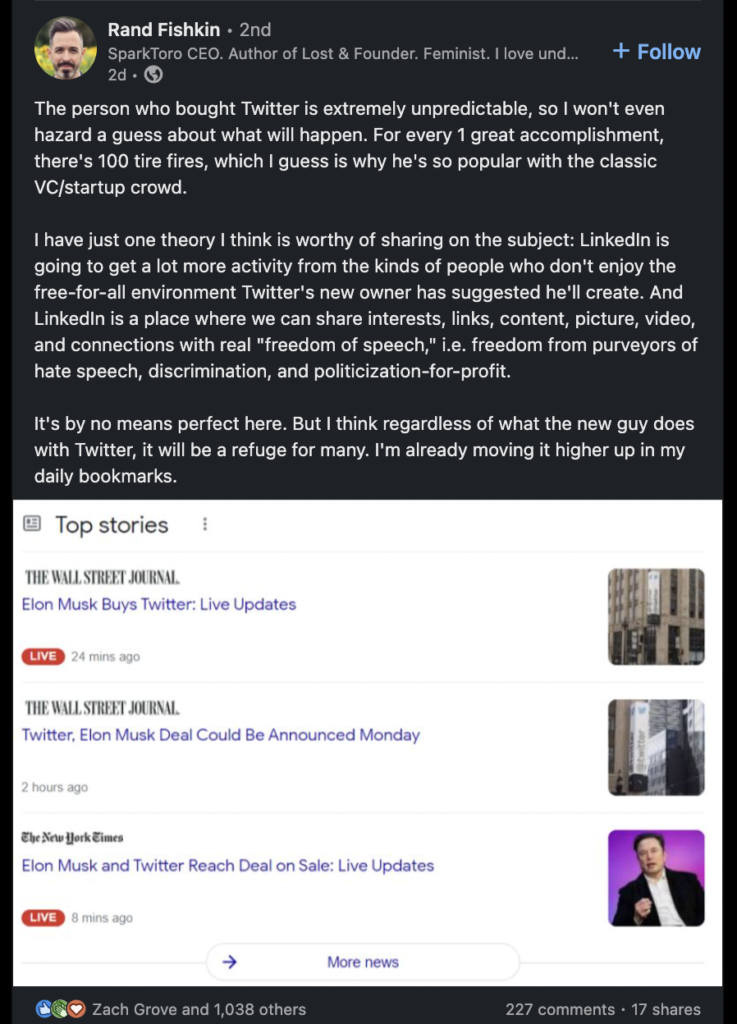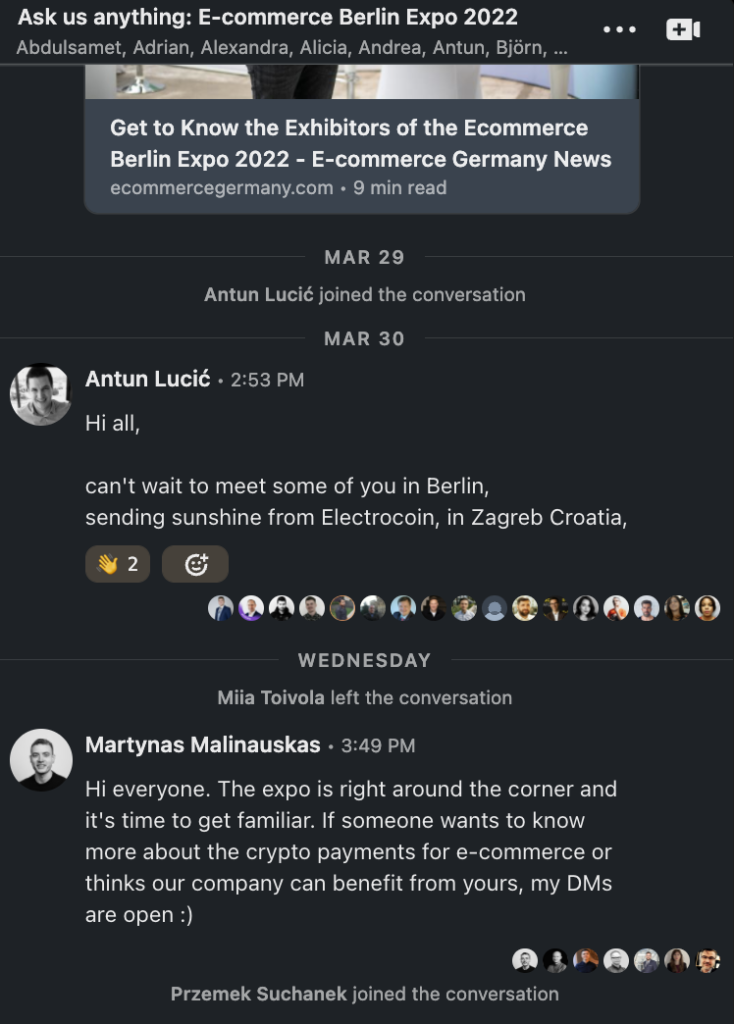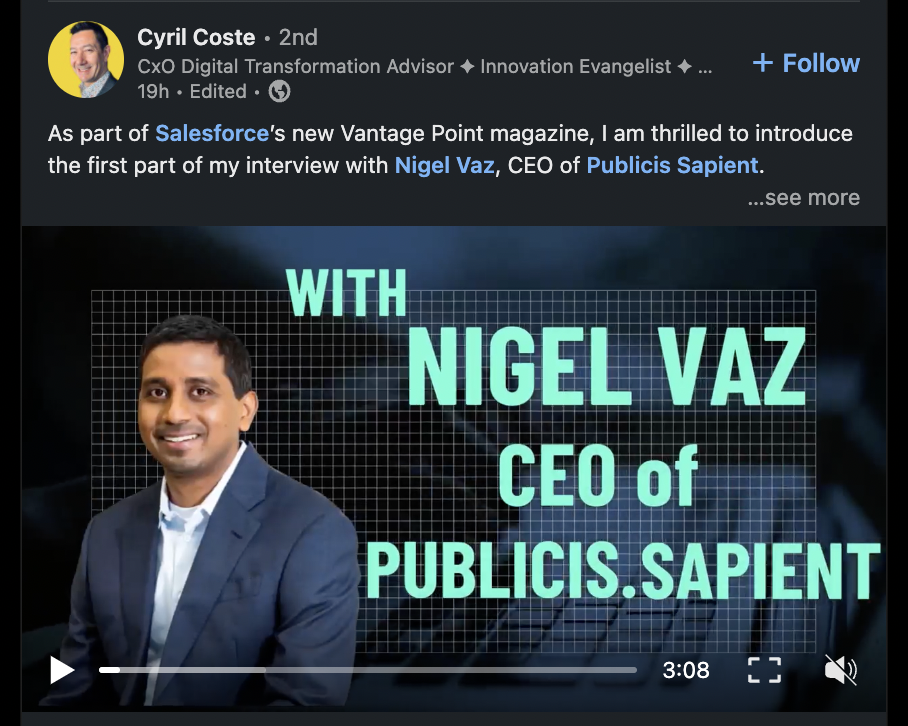14 Best Social Media Automation Tools To Leverage in 2023
We know the struggles of social media managers: juggling multiple accounts, keeping up with content creation, and never quite having enough hours in the day. 🥵 Well, we’ve got your...
Looking to take your sales game up a notch? Social selling on LinkedIn is the answer.
In this definitive guide, we’ll teach you how to use LinkedIn to create and cultivate relationships with potential buyers. You’ll learn how to optimize your profile for maximum visibility, connect with decision-makers, plus much more. By following the tips in this guide, you’ll be able to turn LinkedIn into a sales powerhouse that will help you close more deals than ever before.
Social selling is the process of using social media to build relationships and interact with potential customers. It’s a type of inbound selling that allows you to connect with buyers on a more personal level, fostering trust and credibility from the very beginning of the sales process.
On LinkedIn, social selling is all about leveraging the platform to cultivate thought leadership and drive sales. This process has become increasingly popular in recent years, as ever more buyers are conducting research online before making purchases. People believe in stories and comments over the posts that brands share, which makes social selling especially important.
If you’re not already using LinkedIn for social selling, now is the time to start.
Because LinkedIn is a professional network full of high-quality leads, it’s the perfect platform for social selling. With over 810 million users, it is the world’s largest professional network, and it’s capable of much more than just networking.
LinkedIn allows you to bring in direct leads. Unlike other platforms such as Twitter or Facebook, LinkedIn provides users with the ability to directly contact potential customers and remain fully professional when doing so.
This makes it much easier to connect with leads who are already interested in your products or services. Acting as an individual allows you to approach prospects more naturally.
Although LinkedIn is a large platform with a lot of users, it’s still possible to stand out from the crowd. Since most professionals are not yet using social selling on LinkedIn, there are still a lot of opportunities for you to get ahead and create compelling social selling content.
Before you start social selling on LinkedIn, it’s important to optimize your profile for maximum visibility. Why should you do that? The answer is simple.
By posting more on LinkedIn and making yourself more visible, you will attract people who browse each of your publications, profile, and company. The better your profile, the greater the chances of it converting in the way you want.
You want to make sure it’s a professional image that represents you well, simply because it’s what makes the very first impression. What does the photo say about you? Is it representative of who you are and what you do?
Is the photo high quality? A blurry or low-quality photo will leave a bad impression. Make sure it’s cropped and sized correctly. Nothing is more frustrating than visiting someone’s profile and seeing a tiny, unprofessional-looking profile photo (or none at all).
LinkedIn gives quite a lot of room for keywords and hashtags. Use this to your advantage.
Your profile should be keyword-rich so that potential clients can easily find you when they’re searching for someone with your skills and experience. Be sure to include relevant keywords in your headline, summary, work history, and skills sections (apart from posts, but we’ll cover that later on).
Including keywords will help you show up in more search results and get found by the right people. That’s how it works sometimes – you draw people in with your profile, and they check out your social selling content later.
Your profile summary is one of the most important parts of your LinkedIn profile. This is where you have the opportunity to really sell yourself.
Use this space to write a compelling elevator pitch that showcases your skills and experience. Be sure to use strong language that will capture attention and make people want to learn more about you and your business.
If you’re not sure what to write, try thinking from the perspective of your ideal client.
What are they looking for in a service provider? What specific skills and experience do they need? Write your profile summary with these things in mind, and you’ll be sure to impress prospects.
Tip: while you have a lot of characters to use in this section, don’t go overboard. A well-written, concise summary is much more effective than a long, rambling one.
In the experience section of your LinkedIn profile, you have the opportunity to really showcase your skills and expertise. Since this is a social selling platform, it’s important to go into detail about your work history and describe what you did in each role to boost your credibility.
Did you successfully complete any projects? Did you receive any awards or recognition? Be sure to include these things in your profile so that potential clients can see what you’re capable of.
It’s also a good idea to include some numbers here to back up your claims. For example, if you increased sales by a certain percentage in your previous role, be sure to include that information. Also, you can get inspired by bios from various sales books to create a bespoke elevator pitch. By providing hard evidence of your successes, you build credibility and trust with prospective clients.
On your LinkedIn profile, you can share articles and blog posts that are relevant to your industry. This will show potential clients that you’re knowledgeable and up-to-date on industry trends.
When sharing posts on LinkedIn, be sure to include a brief description so that people know what the article is about. You can also include a call-to-action in your posts, such as “click here to learn more” or “contact me for more information.”
If you consistently share high-quality, relevant content, you’ll be sure to impress potential clients and stand out from the competition. It also helps build thought leadership.
Of course, it can be difficult to keep up with the pace on LinkedIn, which is why you might consider scheduling your personal LinkedIn posts. With Kontentino, you can schedule both Company Updates and Private Profile posts on LinkedIn, saving a lot of time that you’d otherwise have to spend on doing all of that manually.

In addition to sharing articles and blog posts, also give your own opinions on industry trends. If you have something valuable to say, don’t be afraid to speak up.
Your insights will show potential clients that you’re an expert in your field. Just be sure to back up your claims with evidence so that people know you’re not just blowing smoke.
If you consistently share insightful, well-reasoned opinions, you’ll be sure to attract attention. Your target audience will then see that you’re not afraid to speak your mind, and they’ll respect your opinions because they’re likely to be backed up by evidence…or will at least ignite proper discussions.

As well as sharing your own content, it’s also a good idea to keep an eye on what your competitors are publishing. This will give you an idea about what kind of content is performing well in your industry and help you come up with new ideas for your own posts.
In terms of competitors’ content, you should be checking:
With this info, you can adjust your own social selling strategy to make sure you stay ahead of the competition.
Especially when you’re just starting out with social selling, you need to focus on boosting engagement levels that may be non-existent in the beginning. One of the best ways to do this is by responding to comments and messages promptly.
By leaving a comment or sending a message, people are demonstrating their interest in what you have to say. It’s therefore important that you show them that you’re interested in what they have to say too.
Additionally, you can ask your colleagues or friends to help you boost engagement by liking and commenting on your posts. But once you’ve built up a following, you shouldn’t need to do this anymore because people will engage with your content without any prompting.
Engaging in relevant discussions in LinkedIn Groups provides great opportunities to connect with potential clients. When you join a LinkedIn Group, you should:
Being active in LinkedIn Groups is often the very first sign that you’re helpful and knowledgeable. You can also use LinkedIn Groups to find out more about potential clients so that you can tailor your sales pitch to their specific needs.
LinkedIn events that are set up automatically include chats where you’ll be able to see everyone who is attending and start talking to them. Taking part in chats allows you to connect with potential clients before an event starts.
But not only that. By joining chats, you’re also more likely to:
Event chats on LinkedIn are one of the best ways to get the most out of the social media platform and leave potential clients with a positive impression before and/or after you manage to meet them in person or online.

Don’t leave your content without a clear call-to-action (CTA). If you want people to act, tell them what to do via your CTA.
Do you want people to share their opinions on a topic? Ask them directly.
Would you like them to set up a demo with you? Encourage them to do so.
Do you need to sell more tickets for your event? Link to your registration page and provide a discount for further encouragement.
Simply put, people are more likely to engage with your content if you give them a specific task to do. Ensure your call to action is clear and inviting. You can:
To ensure that people are interested in what you have to say, keep engagement loops open.
The key to social selling is to measure your performance in order to understand what works and what doesn’t. Unfortunately, LinkedIn doesn’t provide you with all the data you may need to do this – compared to many other platforms, analytical options are rather limited here.
However, you can measure your performance by looking at the numbers of:
To really understand what’s working, you need to go beyond the numbers. Look at:
With the right data-driven knowledge, you can replicate your successes and achieve even better results from your future social selling efforts.
Social selling is not only about you.
If you want to be successful, you need to engage with the content that other people are sharing. When you engage with other people’s content, you:
Make sure you regularly like, comment on, and share other people’s content. If you find something extraordinary, don’t be afraid to share it or contact the author directly to start a discussion.
Also, you can refer to posts or quotes you’ve seen on LinkedIn. That way, you can start a conversation with someone without even having to share their content. By engaging with other people’s content, you’ll be able to form relations and get your name out there – both of which are essential for social selling.
You should keep an eye on your industry news, and LinkedIn is a great place to do that. Make sure you follow the right people and companies so that you can stay up-to-date with the latest updates, events, and initiatives.
You can also use LinkedIn to find out about new trends and developments in your sector. By following influencers, you’ll be able to gain insights into what’s happening in your industry and how it might affect your business.

LinkedIn is helpful for sales, but it’s not a magic bullet. Social selling is a process, and LinkedIn is just one part of that. You can use a LinkedIn social selling strategy throughout your sales funnel for:
And do business with you. With the right social selling strategy, you can turn LinkedIn into a powerful sales tool.
LinkedIn is supposed to be a networking site, which is why it’s the perfect place to start social selling. But it’s not about posting and waiting for a miracle to happen, it’s all about building relationships and connecting with potential customers.
The hardest step is actually to get started – so don’t wait any longer.